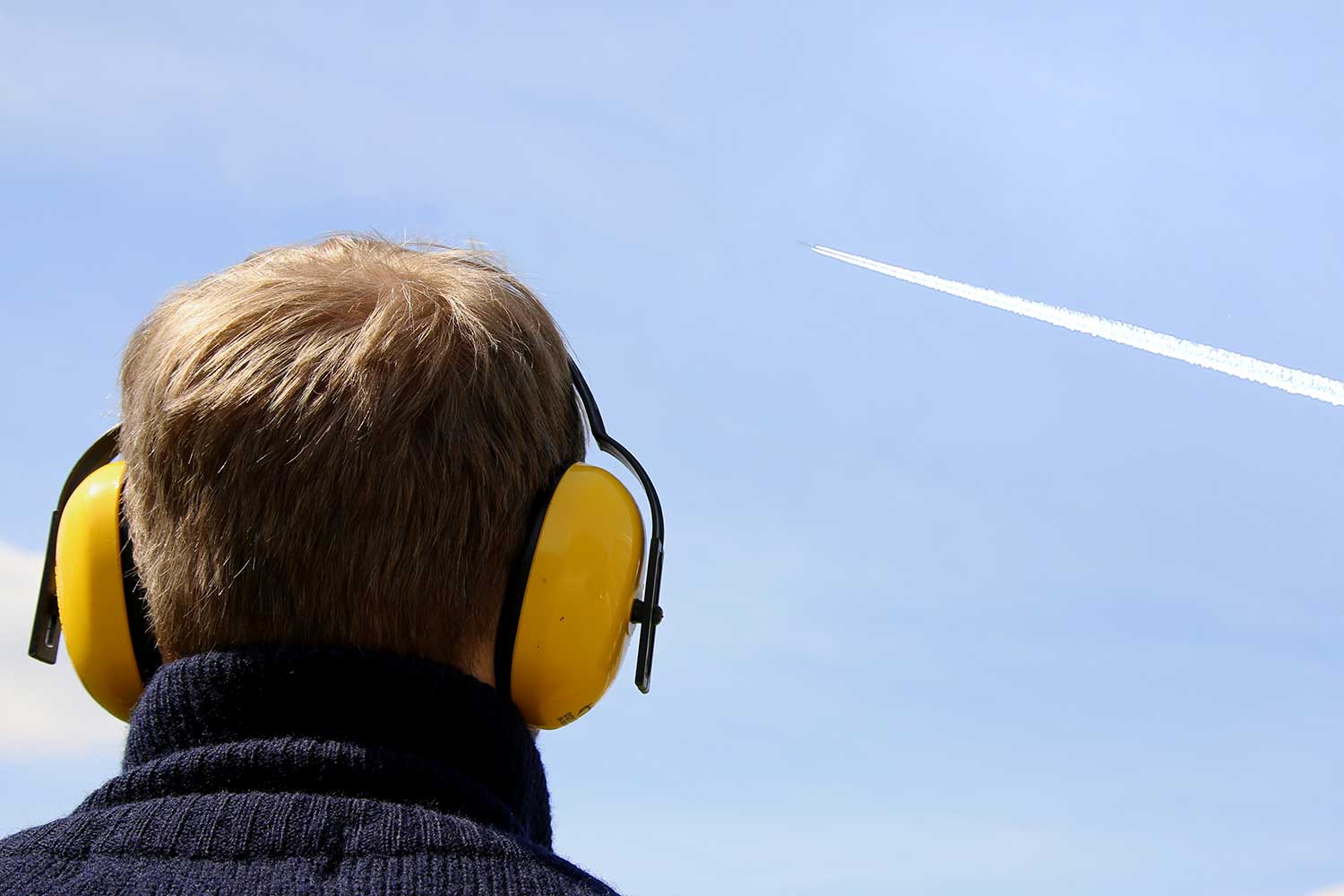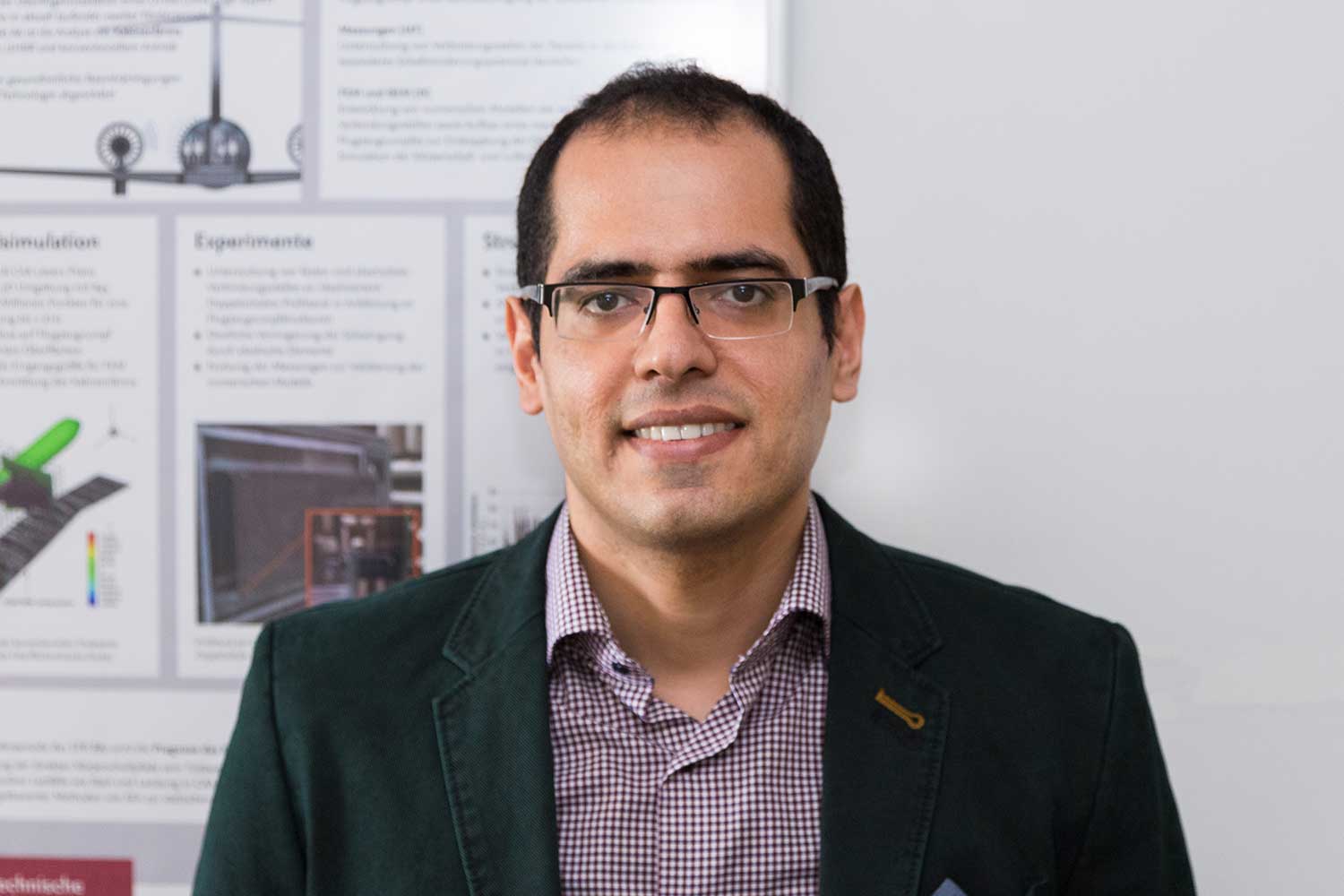Tracking down the noise Focus on Research: Energy Transition in Aviation
Although aircraft have never been quieter than they are today, they still cause noise – mainly because of their engines and the air flow along their wings and landing gear. The airport and its surrounding area are also home to many additional sources of noise: aircraft taking off and landing or taxiing to and fro, trains carrying passengers to and from the terminals, and access roads and motorways full of motorised traffic.

The development of quieter aircraft and the planning of more efficient airports will be improved by the results of the noise pollution. Credit: Jonas Vogel/TU Braunschweig
All this movement generates noise. The experts from Overall System Evaluation, one of the teams in the research project Energy System Transformation in Aviation, are tracking down each and every source of noise. Their analyses are called “multimodal noise assessments”. “First, we calculate and simulate where and how sound is generated in the individual components of an aeroplane. Based on this, we make a noise forecast for the entire aircraft”, explains team member Dr. Ehsan Kian Far of TU Braunschweig’s Institute for Engineering Design. Next, the engineers draw up a list of noises at the airport and its surroundings. The results of their noise assessments feed into the development of quieter aircraft and planning processes for more efficient airports.
Noise – outside and inside the cabin
“We analyse not only flight noise as it is perceived on the ground, or its ‘noise footprint’, but we also assess the noise impact for passengers inside the aircraft’s cabin”, says Kian Far. One example is a new aircraft concept that aims to reduce weight and therefore fuel consumption by using thinner, lightweight outer aircraft skins. “In a case like this, we also look at how the technical change will affect the noise in the cabin. A thinner outer skin must not mean subjecting passengers to more noise. We forward our results to the engineers on our project’s technical teams, who use our calculations to design future aircraft.”

Dr. Ehsan Kian Far, research assistant at the Institute for Engineering Design of the TU Braunschweig. Credit: Jonas Vogel/TU Braunschweig
Quieter aircraft is a key prerequisite if smaller airports close to city centres are to gain greater acceptance with the public. Aviation experts see these city airports as a solution to the rapidly increasing demand for mobility. Having an airport in the city centre would save passengers from having to travel to a large airport far on the outskirts. Getting there takes a lot of time – often more than the flight itself. With direct flights to other city airports or existing, established airports, passengers would save a lot of time, especially on short to medium distances.
The Metropolitan Aircraft
If airports are to occupy space within cities, aircraft will have even stricter requirements to fulfil. The Metropolitan Aircraft research project has already developed a number of basic technologies and competencies to make tomorrow’s aircraft safer, more economical and more eco-friendly – such as optimised engines, high-performance, lightweight materials, and an automated air traffic system. The project was coordinated by the Aeronautics Research Centre Niedersachsen (NFL) and was concluded in 2014.
Text: Nicole Geffert

